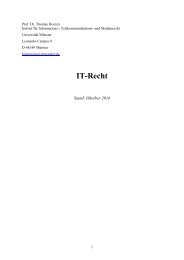3d4yVkKMl
3d4yVkKMl
3d4yVkKMl
Create successful ePaper yourself
Turn your PDF publications into a flip-book with our unique Google optimized e-Paper software.
- 61 -<br />
has been smaller than the programme’s target sample sizes. Australia asserts, however, that Japan<br />
has made no effort to explain how this discrepancy affects the JARPA II research objectives and<br />
has not adapted the programme to account for the smaller actual sample size. Japan also has not<br />
explained how the political decision not to take humpback whales, as well as the small number of<br />
fin whales that have been killed, can be reconciled with the emphasis of the JARPA II Research<br />
Plan on the need for the lethal sampling of those two species. Australia asks how a multi-species<br />
competition model can be constructed on the basis of data only from minke whales, if, as stated in<br />
the JARPA II Research Plan, information based on lethal sampling is required from all three<br />
species to construct such a model or to explore the “krill surplus hypothesis”. Australia emphasizes<br />
that Japan has asserted that the information it needs can be obtained only by lethal take but that the<br />
actual take has been entirely different from the sample sizes on which JARPA II was premised.<br />
Citing these factors, Australia describes JARPA II’s multi-species competition model goal as<br />
“illusory”.<br />
208. Japan asserts that the discrepancy between sample size and actual take, at least with<br />
regard to minke whales, likely means that “it will take several additional years of research to<br />
achieve the required sample sizes before the research objectives can be met”. Along these lines,<br />
Japan states that “if we conduct the research over a longer time or are willing to accept a lower<br />
degree of accuracy then a smaller sample size will also give viable results, but it might delay the<br />
ability to detect potentially important changes in a stock’s dynamics”. Japan also takes the position<br />
that the under-take to date of fin and humpback whales “does not preclude existing ecosystem<br />
models . . . from being improved by use of data that JARPA II has collected in respect of these<br />
species by non-lethal means”.<br />
209. The Court observes that, despite the number of years in which the implementation of<br />
JARPA II has differed significantly from the design of the programme, Japan has not made any<br />
changes to the JARPA II objectives and target sample sizes, which are reproduced in the special<br />
permits granted annually. In the Court’s view, two conclusions can be drawn from the evidence<br />
regarding the gap between the target sample sizes and actual take. First, Japan suggests that the<br />
actual take of minke whales does not compromise the programme, because smaller numbers of<br />
minke whales can nonetheless generate useful information, either because the time frame of the<br />
research can be extended or because less accurate results could be accepted. The Court recalls,<br />
however, that the minke whale sample sizes for particular research items were based on a six-year<br />
research period and on levels of accuracy that were not explained in the JARPA II Research Plan or<br />
in these proceedings. Japan’s statement that the programme can achieve scientifically useful<br />
results with a longer research period or a lower level of accuracy thus raises further doubts about<br />
whether the target sample size of 850 whales is reasonable in relation to achieving the stated<br />
objectives of JARPA II. This adds force to Australia’s contention that the target sample size for<br />
minke whales was set for non-scientific reasons.



